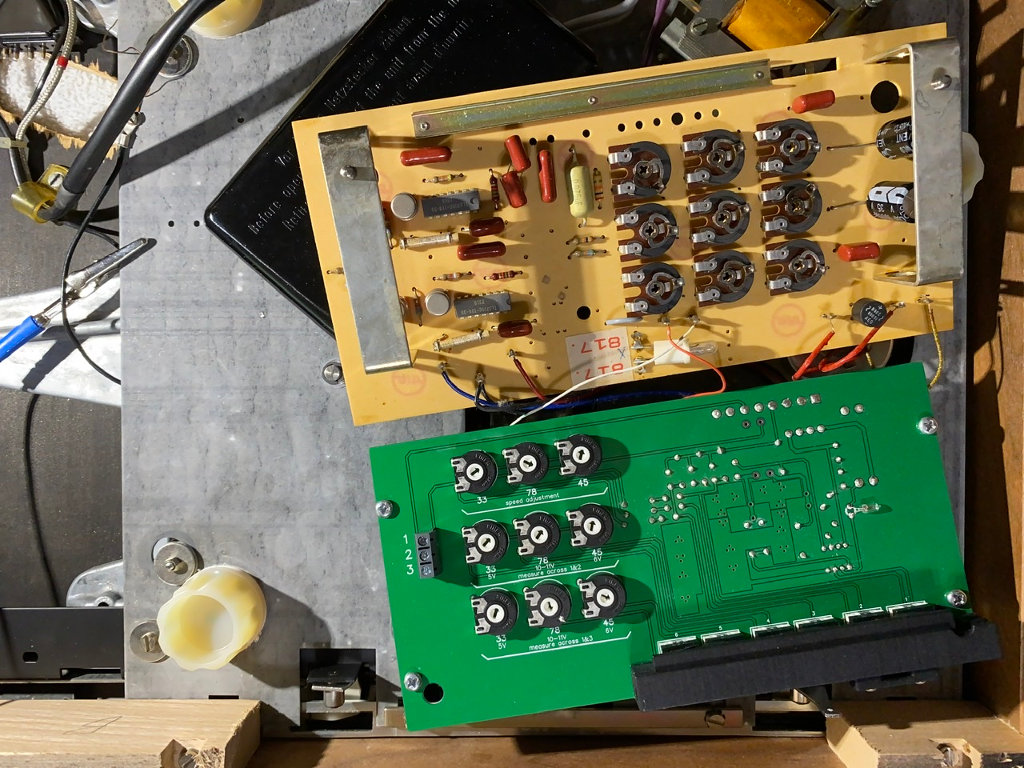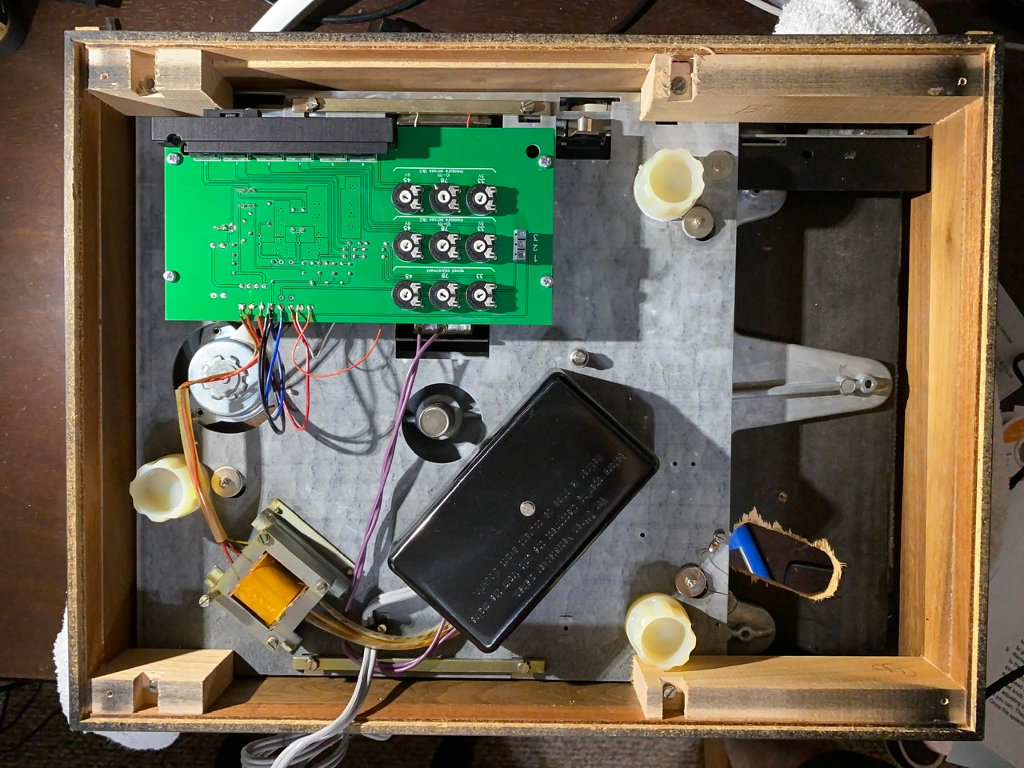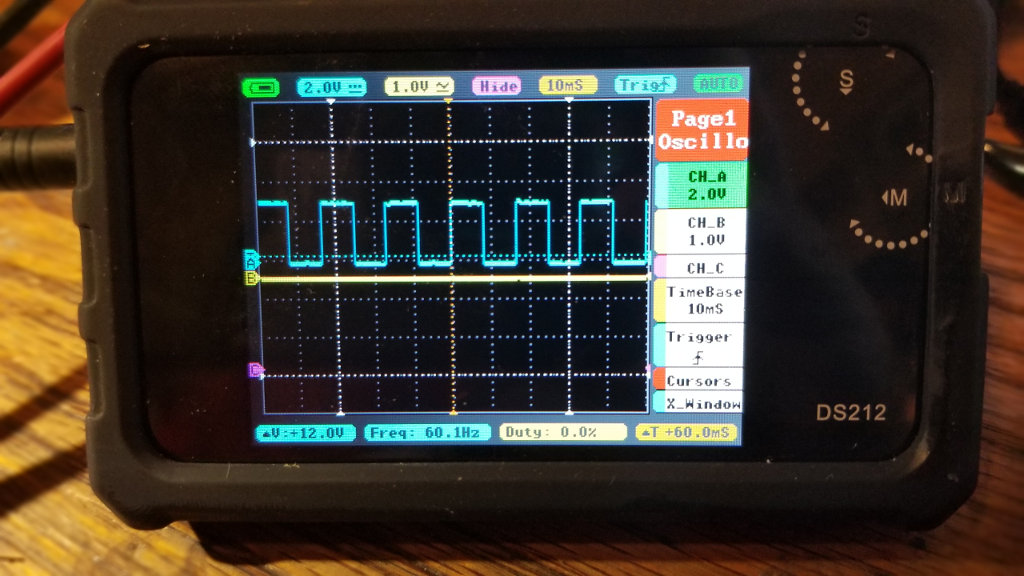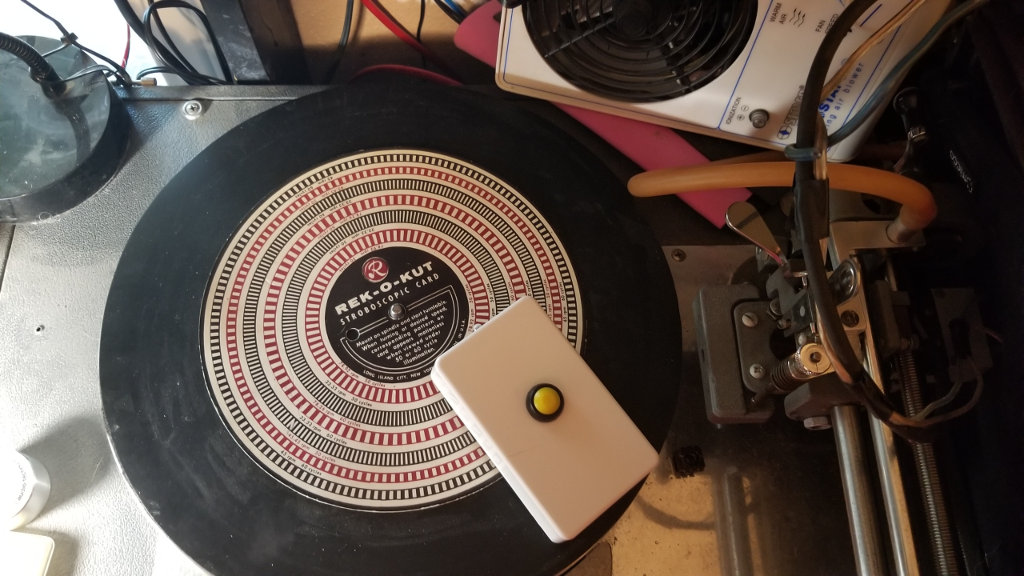We made our Thorens TD 125 MK II spin on 78rpm, but couldn’t measure the revolutions correctly. But there’s a simple DIY solution:
Two days ago, we finally had all the parts to get our Thorens TD 125 MK II upgraded. The old electronics board started to lose it’s tight grip on the speed. Though a good (and careful) cleaning of the sliders and buttons helped to regain speed control, we knew it was time to think about replacing the electronics. Not only because of the slider and button issues, but because the oscillator regulating the speed of the platter is based on a “Wien Bridge” and uses a tiny incandescent light bulb for amplitude stabilization. And that bulb already has a few years of service on it’s belt and could fail at any time.
But there was an additional perk that made the decision easy: The new electronics board would replace the 16 rpm selection with an 78 rpm speed. We could finally listen to our archived 78rpms and to our lathe cuts directly on the main turntable in the listening room.

Rudy prepared the working area and carefully soldered the old connections from the original electronics board. The new board is a new drop-in replacement and it took us just half an hour to get everything back into working order.

Rudy also replaced the tone arm with a new(er) SME model, adjusted all the angles, settings and distances and we were ready to try our new 78rpm capable Thorens TD 125 MK II.
But there was a slight problem: How to measure and adjust the 78rpm setting? The Thorens has an integrated strobe speed window, but that of course only reflects the genuine speeds. There is no 78rpm strobe ring. And with all lamps in the house based on LED we didn’t have enough “flicker” to get a strobe disk illuminated correctly.
Did I mentioned the various cell-phone apps for speed measuring? There’s two types: Those who are supposed to place the phone in the center of the disk and those who are strobing the flash. We tried them both. The first type propelled the phone across the floor at 78rpm, the second type flickered the flash LED unreliably and was awkward to use.
But we are quick thinkers. Could a $3 SOC (System on Chip) like the ESP8266 control an LED correctly to make it pulse in the correct frequency?

Yes – it worked. The digital oscilloscope confirmed 60Hz. But the LED didn’t get any of those strobe disk rings to freeze.
But why?
Finally it dawned on me. Though our mains is at 60Hz, a full AC sine wave makes an (incandescent) light flicker twice – once the curve is all the way up, once it is all the way down. In other words: The lamp actually blinks at double speed. All I had to do was to double the speed in my tiny SOC program.
And that did the trick.
void setup() {
// put your setup code here, to run once:
pinMode(D5, OUTPUT)
}
void loop() {
int del = 4166;
digitalWrite(D5,HIGH);
delayMicroseconds(del);
digitalWrite(D5,LOW);
delayMicroseconds(del);
}
I slapped a project box around the chip, connected a button and battery and voilà – here’s the new record speed strobe.

We adjusted and confirmed the correct speed and .. finally .. Glenn Miller’ s Pennsylvania 6-5000 (of course on Rollofone 78rpm) sounded through the room.
The operation and all related activities were an outstanding success.
